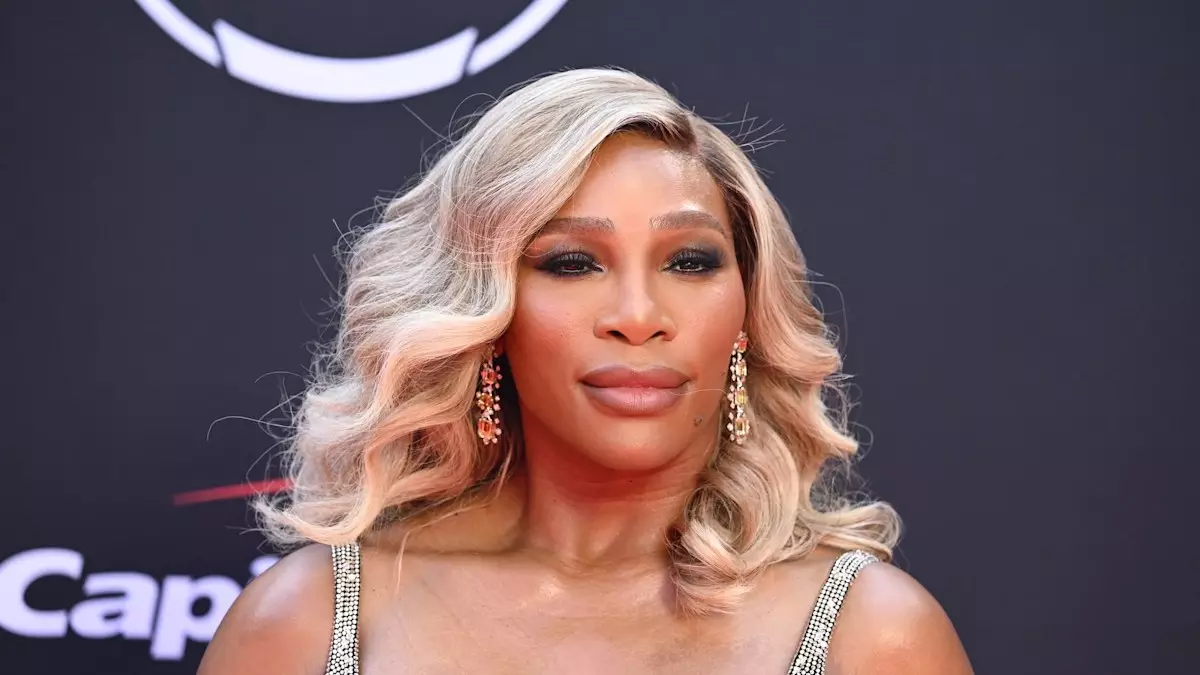Serena Williams, known for her explosive victories on the tennis court, recently embarked on an unexpected foray into the world of halftime entertainment, capturing the stage during Kendrick Lamar’s Super Bowl performance. This crossover into the music industry was not something typically anticipated for the tennis icon, who has predominantly been in the limelight for her athletic achievements. Williams took the opportunity to execute the crip walk, a culturally significant dance move originating from her hometown of Compton. This performance was not merely a nostalgic nod to her past; it also signified how far she had come, merging her athletic prowess with artistic expression.
The crip walk had become associated with Williams after her 2012 Olympic triumph against Maria Sharapova, a moment that stirred controversy due to its cultural implications. However, it wasn’t just a dance; it was an emblem of her identity and a statement of pride for her origins. When Kendrick Lamar’s team reached out to collaborate, Williams hesitated but quickly embraced the idea, stating, “Are you serious? When in the world would I ever be able to dance at a Super Bowl?” This reflects her genuine excitement and willingness to step beyond the conventional limitations often placed upon athletes.
In her Instagram disclosure, Williams offered a rare glimpse behind the scenes as she prepped for her Super Bowl appearance. The video documented her glamour transformation, revealing another facet of her multifaceted persona. Williams depicted moments of practice and anticipation, marking her evolution from an athlete to an entertainer. Such glimpses serve to humanize celebrities, reminding fans that behind the glitz of public appearances are individuals who prepare and train for fleeting moments of fame.
Her exuberance following the performance was palpable as she exclaimed, “That was the best ten seconds of my life!” The joy she expressed underscores the significance of such opportunities for public figures, revealing how even icons desire to bask in fleeting accolades. The brief stint on stage was more than entertainment; it was a validation of her cultural identity and personal history.
Despite the joy of the moment, the road to acceptance of the crip walk had not been smooth for Williams. Following her Olympic performance, she faced a wave of racist backlash, primarily due to the dance’s association with its roots in Compton and its possible misinterpretations. The crip walk, intertwined with issues of race and identity, challenged the perceptions of who was allowed to express cultural identity in mainstream spaces. Williams wittily remarked, “I didn’t crip walk like that at Wimbledon—I would have been fined!” This humorous comment subtly reflects the barriers and expectations placed on athletes, particularly those from marginalized backgrounds.
Williams’s moment at the Super Bowl served as a form of reclamation of the crip walk, embracing the dance rather than shunning it. Her refusal to back down in the face of previous criticism showcases a resilient spirit that resonates with many of her supporters, particularly within the Black community. There’s a profound symbolism in an iconic figure like Williams returning home to her cultural roots on such a grand stage.
Adding another layer of intrigue, Williams’s performance drew attention to her past relationship with artist Drake. The backdrop of Kendrick Lamar’s known rivalry with Drake complicates the narrative, as the dynamics between the three weave an intricate web of personal and professional life in the spotlight. Williams’s humorous acknowledgment of the rap feud during her time at the ESPY Awards shows her ability to navigate the intersection of sports, music, and her personal life with grace and humor.
Serena Williams’s unexpected appearance at the Super Bowl Halftime Show exemplifies far more than a singer’s collaboration; it encapsulates her journey of identity, cultural pride, and the multifaceted roles she embodies. Her performance transformed a celebrated moment into a statement of resilience against cultural misunderstandings and expectations. As she continues to break barriers both on and off the court, Williams’s legacy remains a testament to the power of art and identity in the public eye.


Leave a Reply